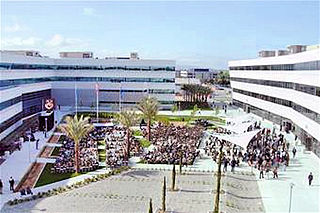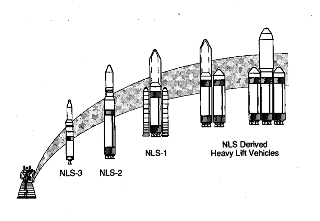
Vandenberg Space Force Base, previously Vandenberg Air Force Base, is a United States Space Force Base in Santa Barbara County, California. Established in 1941, Vandenberg Space Force Base is a space launch base, launching spacecraft from the Western Range, and also performs missile testing. The United States Space Force's Space Launch Delta 30 serves as the host delta for the base. In addition to its military space launch mission, Vandenberg Space Force Base also performs space launches for civil and commercial space entities, such as NASA and SpaceX.

Delta II was an expendable launch system, originally designed and built by McDonnell Douglas. Delta II was part of the Delta rocket family and entered service in 1989. Delta II vehicles included the Delta 6000, and the two later Delta 7000 variants. The rocket flew its final mission ICESat-2 on 15 September 2018, earning the launch vehicle a streak of 100 successful missions in a row, with the last failure being GPS IIR-1 in 1997.

Delta IV is a group of five expendable launch systems in the Delta rocket family introduced in the early 2000s. Originally designed by Boeing's Defense, Space and Security division for the Evolved Expendable Launch Vehicle (EELV) program, the Delta IV became a United Launch Alliance (ULA) product in 2006. The Delta IV is primarily a launch vehicle for United States Air Force (USAF) military payloads, but has also been used to launch a number of United States government non-military payloads and a single commercial satellite.

National Security Space Launch (NSSL) — formerly Evolved Expendable Launch Vehicle (EELV) from 1994 to 2019 — is a program of the United States Space Force (USSF) intended to assure access to space for United States Department of Defense and other United States government payloads. The program is managed by the Space Force's Space Systems Command (SSC), specifically the Assured Access to Space Directorate (SSC/AA), in partnership with the National Reconnaissance Office.

The Air Force Research Laboratory (AFRL) is a scientific research organization operated by the United States Air Force Materiel Command dedicated to leading the discovery, development, and integration of aerospace warfighting technologies, planning and executing the Air Force science and technology program, and providing warfighting capabilities to United States air, space, and cyberspace forces. It controls the entire Air Force science and technology research budget which was $2.4 billion in 2006.

Titan IV was a family of heavy-lift space launch vehicles developed by Martin Marietta and operated by the United States Air Force from 1989 to 2005. Launches were conducted from Cape Canaveral Air Force Station, Florida and Vandenberg Air Force Base, California.

Los Angeles Air Force Base (LAAFB) is a United States Space Force Base located in El Segundo, California. Los Angeles Air Force Base houses and supports the headquarters of the United States Space Force's Space Systems Command (SSC), which was established on Aug. 13, 2021. The center manages research, development and acquisition of military space systems. Space Base Delta 3 provides support functions for the base.
The Aerospace Corporation is an American nonprofit corporation that operates a federally funded research and development center (FFRDC) in El Segundo, California. The corporation provides technical guidance and advice on all aspects of space missions to military, civil, and commercial customers. As the FFRDC for national-security space, Aerospace works closely with organizations such as the United States Space Force and the National Reconnaissance Office (NRO) to provide "objective technical analyses and assessments for space programs that serve the national interest". Although the USSF and NRO are the primary customers, Aerospace also performs work for civil agencies such as NASA and NOAA as well as international organizations and governments in the national interest.

Space Launch Complex 6 at Vandenberg Space Force Base in California is a launch pad and support area. The site was originally developed for Titan III rockets and the Manned Orbiting Laboratory, but these were cancelled before construction of SLC-6 was complete. The complex was later rebuilt to serve as the west coast launch site for the Space Shuttle, but went unused due to budget, safety and political considerations. The pad was subsequently used for several Athena rocket launches before being modified to support the Delta IV launch vehicle family, which used the pad since 2006. The pad is now vacant after the launch of NROL-91 on September 24, 2022, and no future launches are planned.
The Space Test Program (STP) is the primary provider of spaceflight for the United States Department of Defense (DoD) space science and technology community. STP is managed by a group within the Advanced Systems and Development Directorate, a directorate of the Space and Missile Systems Center of the United States Space Force. STP provides spaceflight via the International Space Station (ISS), piggybacks, secondary payloads and dedicated launch services.

Atlas is a family of US missiles and space launch vehicles that originated with the SM-65 Atlas. The Atlas intercontinental ballistic missile (ICBM) program was initiated in the late 1950s under the Convair Division of General Dynamics. Atlas was a liquid propellant rocket burning RP-1 fuel with liquid oxygen in three engines configured in an unusual "stage-and-a-half" or "parallel staging" design: two outboard booster engines were jettisoned along with supporting structures during ascent, while the center sustainer engine, propellant tanks and other structural elements remained connected through propellant depletion and engine shutdown.

Space Systems Command (SSC) is the United States Space Force's space development, acquisition, launch, and logistics field command. It is headquartered at Los Angeles Air Force Base, California and manages the United States' space launch ranges.

The United States Air Force's 4th Space Launch Squadron was a space launch unit located at Vandenberg Air Force Base, California. It was active at Vandenberg from 1994 to 1998 and again from 2003 to 2019. It launched various satellites into orbit from the complex of launch pads at Vandenberg.

The National Launch System was a study authorized in 1991 by President George H. W. Bush to outline alternatives to the Space Shuttle for access to Earth orbit. Shortly thereafter, NASA asked Lockheed Missiles and Space, McDonnell Douglas, and TRW to perform a ten-month study.

USA-213, also known as GPS SVN-62, GPS IIF SV-1 and NAVSTAR 65, is the first satellite in the Block IIF series of Global Positioning System navigation satellites. It will be used to relay signals for the United States Air Force Navstar Global Positioning System (GPS). The satellite was launched at 03:00:00 UTC on 28 May 2010. It will be placed into plane B of the GPS constellation, and will transmit the PRN-25 signal. PRN-25 was previously broadcast by USA-79, which was retired in late 2009 after almost eighteen years of service.

GPS Block IIF, or GPS IIF is an interim class of GPS (satellite), which are used to keep the Navstar Global Positioning System operational until the GPS Block IIIA satellites become operational. They were built by Boeing, to be operated by the United States Air Force being launched by United Launch Alliance (ULA), using Evolved Expendable Launch Vehicles (EELV). They are the final component of the Block II GPS constellation to be launched. On 5 February 2016, the final satellite in the GPS Block IIF was successfully launched, completing the block.

The 6555th Aerospace Test Group is an inactive United States Air Force unit. It was last assigned to the Eastern Space and Missile Center and stationed at Patrick Air Force Base, Florida. It was inactivated on 1 October 1990.
Space Vector Corporation (SVC) is a United States-based company that provides aerospace products and services to government and commercial customers. Space Vector is headquartered in Chatsworth, California and is a privately held small business. Its primary products are flight safety and system batteries, GPS tracking systems, custom avionics and structures, attitude control systems, pneumatic components, and separation systems. Space Vector also provides launch services as a prime contractor under the Space and Missile Systems Center (SMC) Sounding Rocket Program (SRP-3) which includes performing vehicle integration activities, end-to-end system testing, payload integration, launch operations, and mission analysis and design.

Stephen G. Purdy Jr. is a United States Space Force major general who serves as commander of Space Launch Delta 45, program executive officer for assured access to space, director of the Eastern Range, and director of launch and range operations of the Space Systems Command.

Steven P. Whitney is a United States Space Force major general who has served as the military deputy to the assistant secretary of the Air Force for space acquisition and integration since August 24, 2021. He is responsible for research and development, test, production, product support, and modernization of Space Force programs worth more than $15 billion annually. His responsibilities include crafting program strategies and options for representing Department of the Air Force positions to the Office of the Secretary of Defense, Congress and the White House.



















